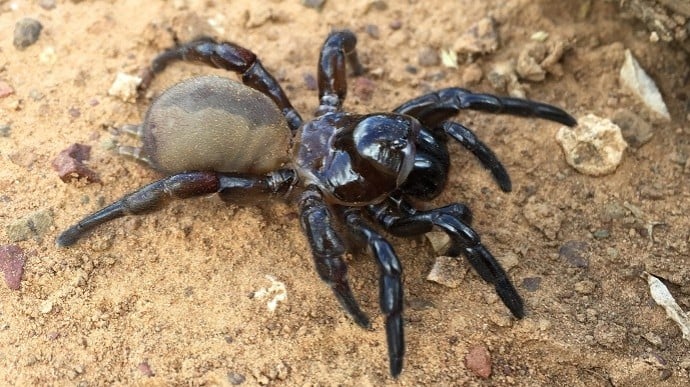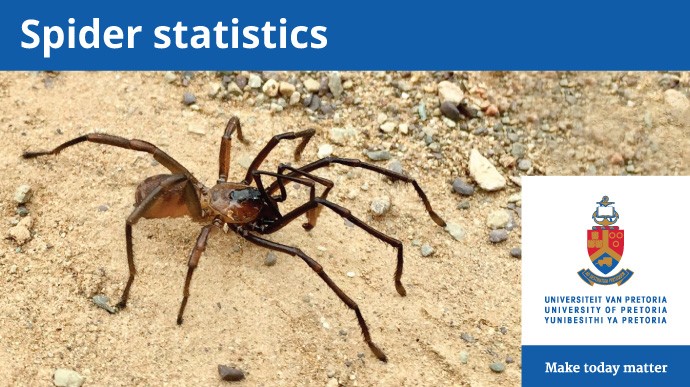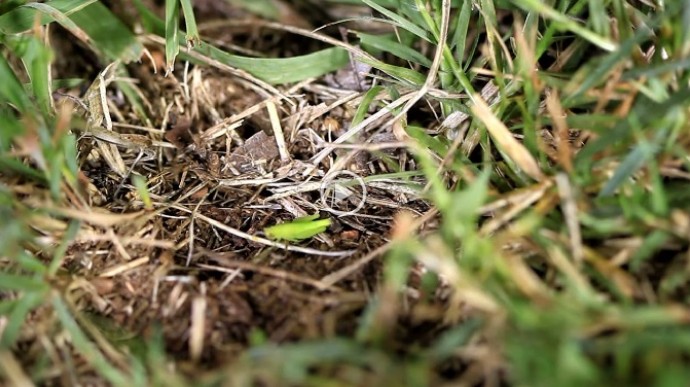The plight of the world’s rhinoceros is well-known, but no less sad a tale because of it. From estimated global populations of more than 500 000 at the start of the 20th century, there are less than 29 000 rhinoceros left in the whole world – less than 1% of the world’s rhino population remains. Most of these are found in Southern Africa.
Rhino poaching in South Africa took off steeply around 2009, and shows no sign of abating before every rhino has been killed or mutilated for its horn.
This is because in Asia, the Javan, Sumatran and greater one-horned rhinos have been hunted to the brink of extinction to meet the demand for powdered rhino horn for traditional Chinese medicine. Now that Asian populations have been decimated, poachers have turned to Africa, where rhino populations are larger.
It’s easy to understand the demand – the market value of rhino horn by weight is higher than diamonds or cocaine, fuelled by both traditional Chinese medicine and rising socioeconomic status in Vietnam. Combined with the exploitation of desperately poor South Africans to commit poaching crimes, this situation has seen the number of rhinos poached in South Africa almost double every year since 2009, except for 2015, which saw a slight decline.
Authorities in South Africa are faced with the monumental challenge of preventing this illicit trade in rhino horn. One of the biggest challenges is to prosecute suspected poachers. This difficulty is compounded by the fact that the horns are traded internationally by smuggling groups. Another major challenge is the difficulty of connecting rhino deaths to poachers in court.
While preventing the extinction of such charismatic animals is in itself a cause worth fighting for, rhinos also influence entire ecosystems through their behaviour. Losing rhinos in South Africa will lead to untold environmental devastation in many parks and reserves.
Without prompt and effective intervention, rhinos throughout the world will be extinct within a few years.
Source: Harper et al 2013, Save the Rhino
At the University of Pretoria’s Veterinary Genetics Laboratory (VGL) at Onderstepoort, Dr Cindy Harper and her team have developed a ground-breaking technique to collect and catalogue DNA from rhinos and rhino horns. This will help police and wildlife investigators link poachers to crime scenes, leading to more convicted poachers and fewer rhino’s poached in Southern Africa.
Known as RhODIS (Rhino DNA Indexing System), this database stores a unique genetic fingerprint for every rhino that has been sampled. The concept is based on the Combined DNA Indexing System (CODIS) used by American law enforcement to store the genetic fingerprints of humans.
Originally established in 2009, the method uses genetic (DNA) sequences known as short tandem repeats (STRs) to create a fingerprint or barcode that is unique to each animal. Included in this barcode are a gender marker and a species marker than can differentiate between black and white rhinos (Ceratotherium simum and Diceros bicornis, respectively), the two most common African rhino species.
This technique uses a tiny amount of DNA (less than 20mg of horn is needed), and so accurate it can be used as evidence in court cases. VGL has since produced sample collection kits, as well as an app version of the RhODIS system called eRhODIS. In addition, the RhODIS team have provided training to more than 400 law enforcement and conservation workers in South Africa, Namibia and Swaziland. South Africans trained on the system include SAPS investigators, prosecutors, Green Scorpions, veterinarians and wildlife officials. The training covers principles of DNA profiling for forensics, and ensures that field samples are correctly collected.
“The involvement with forensics, particularly in cases that could involve organised crime, is stressful - everyone needs to work meticulously.” – Dr Cindy Harper.
In 2012, the South African government passed legislation stating that all captured rhinos and horns should be sampled and sent to the VGL for inclusion in the database. This means by law samples must be collected whenever a rhino or a rhino corpse is moved, shot or tagged. Evidence submitted in this way has led to the conviction of several local poachers and Vietnamese agents working with them.
According to Harper, the RhODIS team have prepared around 200 forensic reports based on RhODIS data thus far, and submitted them to the court in the form of affidavits. Of these, around 50 poaching incidents have been linked to other forensic evidence (either rhino horn or other evidence). Many of these cases have not yet reached court.
Thus far, high profile convictions include Xuan Hoang (a Vietnamese citizen), two Mozambican citizens, a Zimbabwean poacher, and two South Africans. The RhODIS database has also helped to identify the origin of many recovered horns, including horns recovered from a Vietnamese horn trafficker less than six weeks after the rhinoceros was poached in Kruger National Park.
Source: University of Pretoria, Harper et al 2013, Oxpeckers Investigative Environmental Journalism
Worldwide, rhino populations are down to around 29 000 individuals across five species: white 20400, greater one-horned 3345, black 5055, Sumatran 100, Javan 58. Of these populations, only the white rhinoceros is not considered to be a threatened species, and the black, Sumatran and Javan rhinoceros are all on the IUCN critically endangered list. The vast majority (around 25 000) of these rhinoceros are found in South Africa.
Since 2009, rhino deaths have risen steeply in South Africa, with poaching arrests following a similar trend. Unfortunately, of 1164 poaching arrests from 2010 – 2014, there has been a conviction rate of less than 5%. That does show an improvement from 2010, however, when only 2.6% of those arrested were convicted.
2010: 334
2011: 455
2012: 674
2013: 1008
2014: 1245
2015: 1175 to date
2010: 165
2011: 232
2012: 267
2013: 343
2014: 386
2015: 300+
Source: Oxpeckers Center for Investigative Environmental Journalism, Rhinos.org
In order to link poachers to crime scenes, investigators must be able to connect mutilated or killed rhinos to rhino horns and other items to each other. The only reliable way to do this is through a genetic fingerprinting system that produces a unique code or DNA pattern for each rhinoceros. This is at the heart of the RhODIS system.
DNA barcodes based on STRs have been used around the world for this purpose – the American CODIS system for human genetic fingerprints also works on this principle. It is widely accepted as the best approach to link evidence to an individual, be that individual a human or a rhinoceros. The system discriminates between male and female rhinos, and black and white rhinos, making it a powerful tool for research and conservation beyond merely stopping poachers. It can also differentiate between the three sub-species of black rhino, which can help to locate where a horn might have come from.
Harper’s team has developed a smartphone app that functions alongside the RhODIS system, known as eRhODIS. Built on the Android operating system and launched late in 2013, eRhODIS provides guidance for users of the RhODIS kits to streamline the sample collection and submission process. It ensures that collected field data is accurate and immediately available to the laboratory and the investigating authorities.
Rhinoceros have been poached for decades, mostly for use in traditional Chinese medicine. Powdered horn is dissolved in boiling water and drank to ward off a myriad of ailments such as fever and gout. An ancient medical text recommends powdered rhino horn to treat snakebites, hallucinations, typhoid, headaches, carbuncles, vomiting, food poisoning, and ‘devil possession’. In Vietnam, it is used as hangover cure or to treat cancer, or simply as a symbol of status.
It must be mentioned that rhino horn, which is mostly made of keratin (the substance that our nails and hair is composed of), has no known medical benefits according to modern research. Despite this, demand for rhino horn is in fact increasing as the Chinese and Vietnamese middle class continues to grow.
Demand has grown particularly fast in Vietnam, where it has become something of a status symbol. Evidence shows that the most common motivation amongst the Vietnamese middle class for owning rhino horn is emotional rather than medicinal – it affords them higher social status to be able to own and gift rhino horn to their peers.
“Every avenue should be explored to deal with the problem, but educating consumers may take too long to save these critically endangered species,” – Dr Cindy Harper.
This phenomenon has driven up the black market prices for rhino horn dramatically; the current value is hard to pin down, but estimates range from R200 000 to over R1 million per kg.
In general, the poachers themselves are poor South African, Zimbabwean or Mozambican men who are paid for horns and given sophisticated equipment by wealthy Asian agents or international criminal gangs. Poachers are usually armed, making anti-poaching efforts a life-threatening task.
The RhODIS initiative is gaining traction internationally thanks to advocacy work by Dr Harper, a partnership with the World Wildlife Fund (WWF), and the success of the system itself.
RhODIS has been formally recognised by The Convention on International Trade in Endangered Species of Wild Fauna and Flora (CITES) and the International Union for Conservation of Nature (IUCN) African Rhino Specialists Group for its pioneering role in tracking poached wildlife and wildlife products.
Nine African countries are part of the RhODIS system – South Africa, Namibia, Zimbabwe, Kenya, Malawi, Swaziland, Botswana, Uganda and Zambia. The WWF pioneered this effort, which involved training more than 500 individuals on the RhODIS process and crime scene management, and establishing memorandums of understanding between RhODIS and the partner countries. WWF also created the RhODIS Partnership Network to improve international cooperation in this regard. Training is supported by the SADC-Rhino Elephant Security Group and the Interpol Environmental Conservation Working Group (ECWG).
In addition, the system may be put into place in India to help them protect the greater one-horned rhinoceros indigenous to the sub-continent, which is also threatened with extinction thanks to poaching. Harper has visited India to showcase the system, and Indian conservationists have visited South Africa to take part in training workshops.
At the University of Pretoria, the solutions to change the world can be found in the research we do today; such as a ground-breaking new way to protect our rhinos from poachers. Another milestone on our path towards a sustainable relationship with the environment and its inhabitants.
Make today matter
Images galleries (free to use but credit to VGL):
http://www.up.ac.za/en/the-onderstepoort-veterinary-genetics-laboratory/gallery/view-2032495-rhodis-workshop
http://www.up.ac.za/en/the-onderstepoort-veterinary-genetics-laboratory/gallery/view-2032479-laboratory
Cindy Harper is the Director of the Veterinary Genetics Laboratory, Faculty of Veterinary Science, University of Pretoria, South Africa. She obtained her BVSc (Veterinary Science) and MSc degrees from the University of Pretoria. She has supervised post-graduate students who have been actively involved in the research activities of the Veterinary Genetics Laboratory. She has authored papers in scientific journals, has presented at national or international scientific congresses and numerous presentations at other meetings. Her main research interests are in applied veterinary genetics and molecular based veterinary forensics, particularly of wild African species. She has played an active role in international standardisation of genetic testing of companion and wild animal species and developed the RhODIS (Rhinoceros DNA Index System) program, which serves as a flagship program for the use of DNA as a forensic tool to support the investigation and prosecution of wildlife crime, focussing on rhinoceros specifically.
http://www.up.ac.za/en/faculty-of-veterinary-science/news/post_1951095-up-initiative-leads-in-rhino-poaching-prosecution
C.K. Harper et al. / Forensic Science International: Genetics 7 (2013) 428–433 431
RhODIS Background update November 2015
http://oxpeckers.org/2014/07/cases-on-the-court-roll/
https://www.savetherhino.org/rhino_info/poaching_statistics
http://rhinos.org/the-crisis/
https://www.savetherhino.org/get_involved/donate/ten_good_reasons_to_save_rhinos
See related gallery, infographic and videos on the right sidebar.
Dr Cindy Harper
January 1, 2016

 Story
Story
Nine new trapdoor spider species have been discovered in the Great Karoo by researchers at the University of Pretoria’s (UP) Department of Zoology and Entomology, and the Agricultural Research Council (ARC).
 Infographic
Infographic
Trapdoor spiders hide in underground burrows that are covered with a cork-like lid made of soil, silk and plants. Learn more about trapdoor spiders with this infographic.
 Video
Video
Watch carefully to see how a trapdoor spider catches its prey through its trapdoor.
Copyright © University of Pretoria 2024. All rights reserved.
Get Social With Us
Download the UP Mobile App